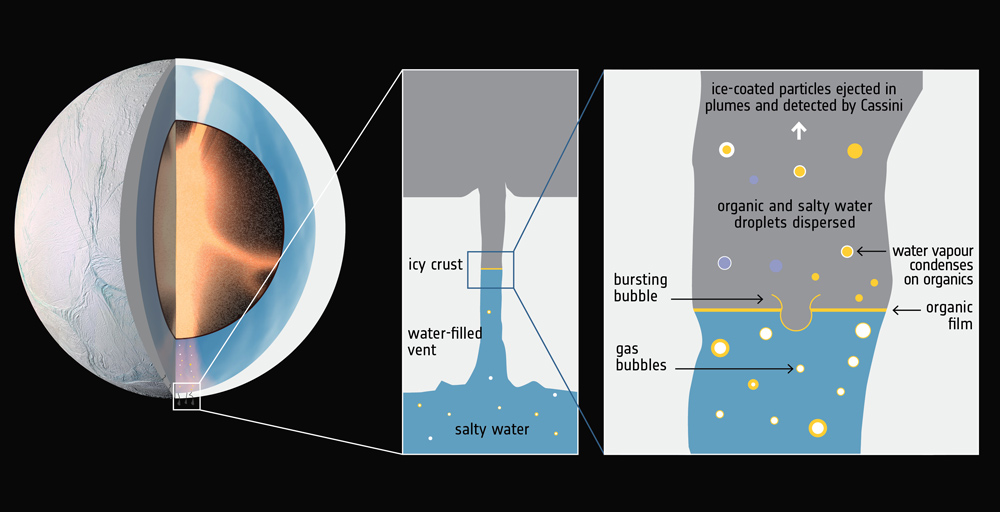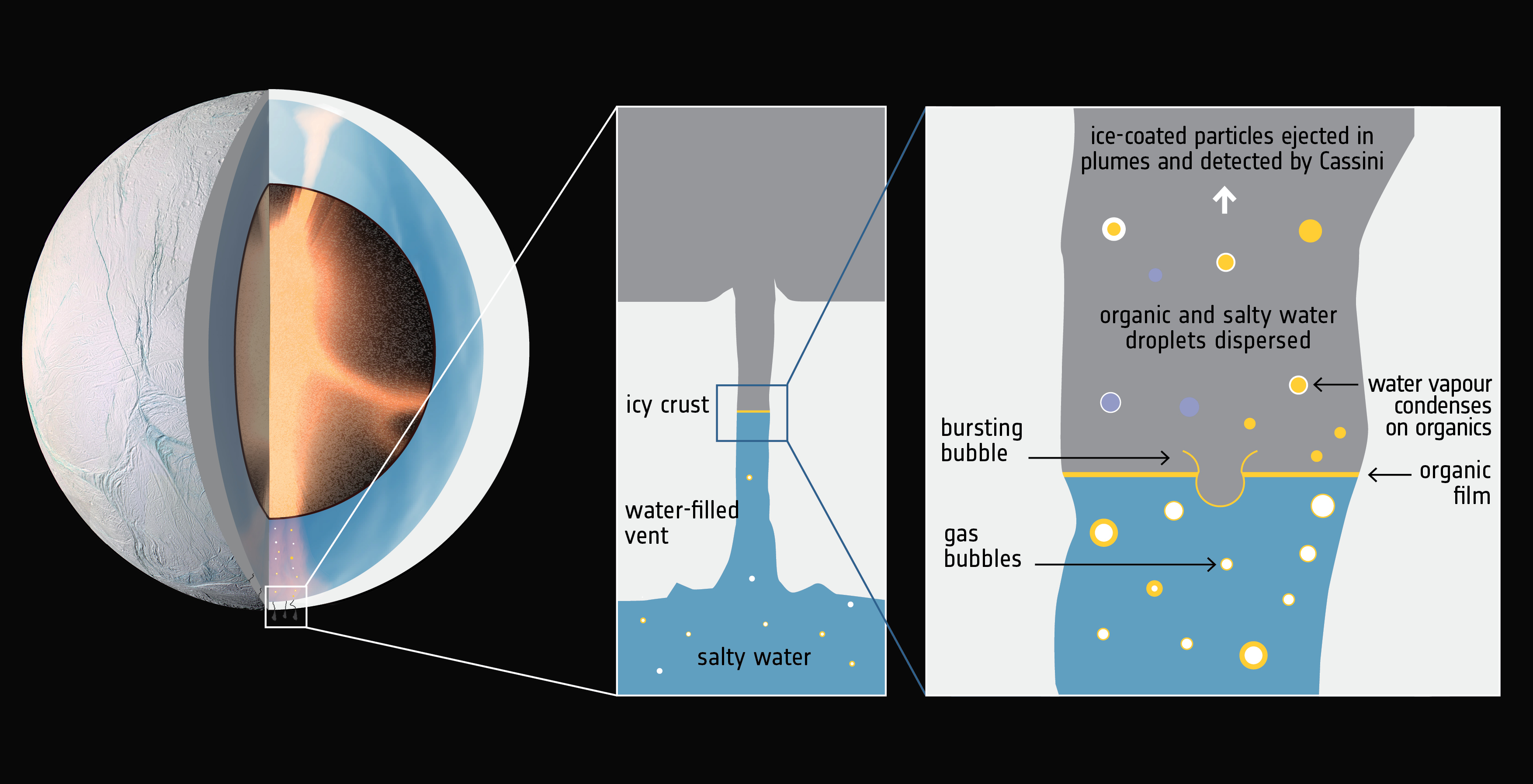Hydrothermal Activity in Enceladus’ Core and the Rise of Organic-rich Bubbles

| Credit | ESA; F. Postberg et al (2018) |
|---|---|
| Language |
|
Left: The interior of Saturn’s moon Enceladus. The icy crust is thinner in the polar regions, below which sits an ocean. Water percolating into the porous, rocky core is warmed by contact with rock in the tidally heated interior. The heated water enters the ocean at hydrothermal vents located beneath the poles. Complex organics and rocky particles are carried by the hydrothermal flow. Gas bubbles rising through the ocean collect organic material at their surface and transport them upward to the ice shell.
Center: The oceanic water table lies inside cracks in the south polar ice crust. Bubbles of gas help bring organic material to the ocean surface, where it creates a thin film in the icy vents.
Right: When the bubbles burst at the surface they disperse some of the organics, along with a spray of salty ocean water. Droplets of the dispersed organic material become ice-coated when water vapor freezes on their surface and, along with the frozen spray of salty ocean water, are ejected in the plumes and then detected by Cassini.
Note that the insets at center and right are rotated 180º with respect to the global view at left.

